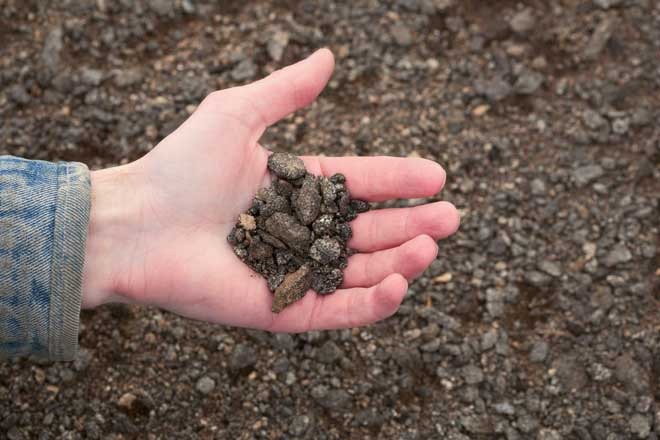
How to Remove Rocks from the Soil in Your Yard
Having a few rocks in your soil isn't necessarily a bad thing. They may even aid in aerating the soil and enhancing drainage. However, cultivating grass or other vegetation may be difficult if there are too many rocks.
In this article, we'll show you how to remove rocks from the soil in your yard so that you can create a more hospitable environment for plant growth.
Are Rocks Good For Soil?
If you live in a garden district, you’ve probably noticed that the soil is delightfully textured and bumpy.
They help to regulate moisture levels. When rocks are located close to water sources, they catch rain and snowfall runoff, preventing it from running off the ground into storm drains. This feedback mechanism helps to keep soil wetter during dry periods and help prevent landslides during rainy seasons.
They also help to form natural drainage channels. Water seeps down through cracks and crevices in rocks, making them greatumps for transferring water and sediment from one part of the soil to another.
Over time, this process can create channels that allow water to flow freely through your yard while keeping compacted soils from becoming boggy.
In addition to the water conservation benefits of using rocks in yards and gardens, there are numerous other products that can be created with readily available rock.
What Type Of Rock Is In Your Soil?
One way to remove rocks from your soil is to figure out what type of rock it is. Different rocks have different properties, so knowing what kind of rock you're dealing with will help you choose the best method for removal.
- Igneous rocks, like granite, are tough and durable, making them difficult to break up and remove.
- On the other hand, Sedimentary rocks are much easier to break apart and dig out.
Once you know what kind of rock is in your soil, you can choose the best method for removing it.
The Different Methods For Removing Rocks From Soil
One of the most common questions people have is how to remove rocks from soil. A few different methods can be used, depending on the size and type of rock, as well as the amount of soil that needs to be removed. Let's take a look at a few of the most common methods.
First method
The first method is manual removal. This is usually the best option for small rocks or stones, as well as for areas where only a small amount of soil needs to be removed.
For this method, you'll need a shovel, a pick, or some other type of tool to help loosen the rock from the soil. The rock can then be easily lifted out of the ground after being loosened.
This method is much more labor-intensive, but it will not damage your soil or plants.
Second Method
Another common method is using an excavator or other type of machinery. This is usually the best option for larger rocks or stones, as well as for areas where a larger amount of soil needs to be removed. Excavators have large buckets that can scoop up both rocks and soil, making them ideal for this type of job.
This might be a quick and simple technique to remove boulders, but if you're not careful, it can also be quite harmful to your soil. Using a rototiller is an additional choice. While doing this will loosen the soil and make it simpler to remove the boulders; if you are not careful, it may also harm plant roots.
If you have a lot of rocks, you may want to consider renting a tiller or power washer. These machines can quickly break up the soil and loosen the rocks, making them easier to remove.
Tip: If you're really struggling to get rid of the rocks, you can always hire a professional landscaper or excavator to come and take care of the problem for you.
Rock-Removal Equipment For Soil
Attachments for lawn tractors
For your lawn tractor, there are accessories available for rent or buy that can help you remove rocks from the ground without exerting yourself physically.
When you drive your tractor with these raking implements attached, they drag across the soil's surface, picking up pebbles in front of the metal tines.
Additionally, there are hauling buckets and rock raking attachments for ATVs or UTVs. The sole method of removal for large amounts or heavy boulders is to use skid steer machinery.
Bucket Accessories
Your yard's rocky areas can be scooped up by a skid-steer tractor equipped with a bucket, allowing you to remove the problematic pebbles down to a depth of several feet. Take the tractor bucket and move the rocks away from the area.
Hook Attachment
Boulders on the surface can be safely dug out with a claw attachment and moved to the destination of your choice.
You can get help from tractor rental or sale facilities to discover the ideal attachment for your particular rock removal activity.
Conclusion
Conclusively, if you have rocks in your soil, there are a few different ways that you can remove them. You can use a shovel to dig them out, or you can use a power washer to blast them away.
You can also use a tiller that you can rent from your neighborhood hardware shop to loosen the boulders and break up the dirt.
Once you've removed the rocks, be sure to add some organic matter to your soil to help improve its quality.
Did you find this article helpful? Comment below and let us know.
Post a comment